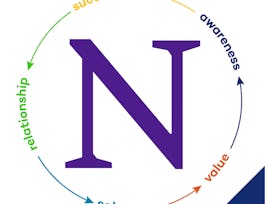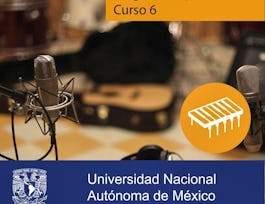Whereas the focus of traditional literacy pedagogy has been the written word in its standard and literary forms, this courser expands the scope of literacy learning to encompass contemporary multimodal texts and the wide range of ways of making meaning that occur in different social and cultural contexts. Another course, "Literacy Teaching and Learning: Aims, Approaches and Pedagogies" addresses pedagogical aspects of literacies. This "Multimodal Literacies" learning module does not require or expect that participants will have already completed the "Literacy Teaching and Learning" module.


Multimodal Literacies: Communication and Learning in the Era of Digital Media
Taught in English
Some content may not be translated
13,884 already enrolled
(159 reviews)
Details to know

Add to your LinkedIn profile
1 quiz
See how employees at top companies are mastering in-demand skills


Earn a career certificate
Add this credential to your LinkedIn profile, resume, or CV
Share it on social media and in your performance review

There are 4 modules in this course
This module introduces the key ideas of the course: communication, representation (or making meanings for oneself as an aid to thinking), and the design of meaning. Today, our tools for communication and representation have been widely expanded by digital tools. For these reasons, we need to extend our literacy pedagogy to encompass literacies in the plural, including a wider range of modes of meaning than alphabetic text alone.
What's included
4 videos9 readings1 quiz1 peer review2 discussion prompts1 plugin
This module begins with an overview of the conventional focus of literacy pedagogy – reading and writing. In its second half, the module applies a parallel set of tools to analysis of visual meanings.
What's included
16 videos3 readings3 peer reviews3 discussion prompts
In this third module of the course, we examine spatial, tactile, gestural, audio, and oral meanings – all today part of a wider repertoire of teaching and learning that we call "literacies" in the plural, or "multiliteracies." In the final section of the module, we explore how we use literacies to think in characteristically "academic" ways. In this sense, literacies play a critical supportive role in the learning process.
What's included
13 videos3 readings3 peer reviews3 discussion prompts
The final module of the course examines the question of learner differences – including literacies learning at different age levels and second language learning. We also explore strategies for differentiated instruction. Finally, we investigate the range of assessment strategies that can be used to diagnose learner needs, offer feedback during the learning process, and evaluate learning outcomes.
What's included
13 videos2 readings5 peer reviews2 discussion prompts1 plugin
Instructors

Recommended if you're interested in Education

Northwestern University

Universidad Nacional Autónoma de México

University of Michigan

Columbia University
Why people choose Coursera for their career




Learner reviews
Showing 3 of 159
159 reviews
- 5 stars
89.93%
- 4 stars
5.03%
- 3 stars
1.25%
- 2 stars
0.62%
- 1 star
3.14%

Open new doors with Coursera Plus
Unlimited access to 7,000+ world-class courses, hands-on projects, and job-ready certificate programs - all included in your subscription
Advance your career with an online degree
Earn a degree from world-class universities - 100% online
Join over 3,400 global companies that choose Coursera for Business
Upskill your employees to excel in the digital economy
Frequently asked questions
Access to lectures and assignments depends on your type of enrollment. If you take a course in audit mode, you will be able to see most course materials for free. To access graded assignments and to earn a Certificate, you will need to purchase the Certificate experience, during or after your audit. If you don't see the audit option:
The course may not offer an audit option. You can try a Free Trial instead, or apply for Financial Aid.
The course may offer 'Full Course, No Certificate' instead. This option lets you see all course materials, submit required assessments, and get a final grade. This also means that you will not be able to purchase a Certificate experience.
When you purchase a Certificate you get access to all course materials, including graded assignments. Upon completing the course, your electronic Certificate will be added to your Accomplishments page - from there, you can print your Certificate or add it to your LinkedIn profile. If you only want to read and view the course content, you can audit the course for free.
You will be eligible for a full refund until two weeks after your payment date, or (for courses that have just launched) until two weeks after the first session of the course begins, whichever is later. You cannot receive a refund once you’ve earned a Course Certificate, even if you complete the course within the two-week refund period. See our full refund policy.



